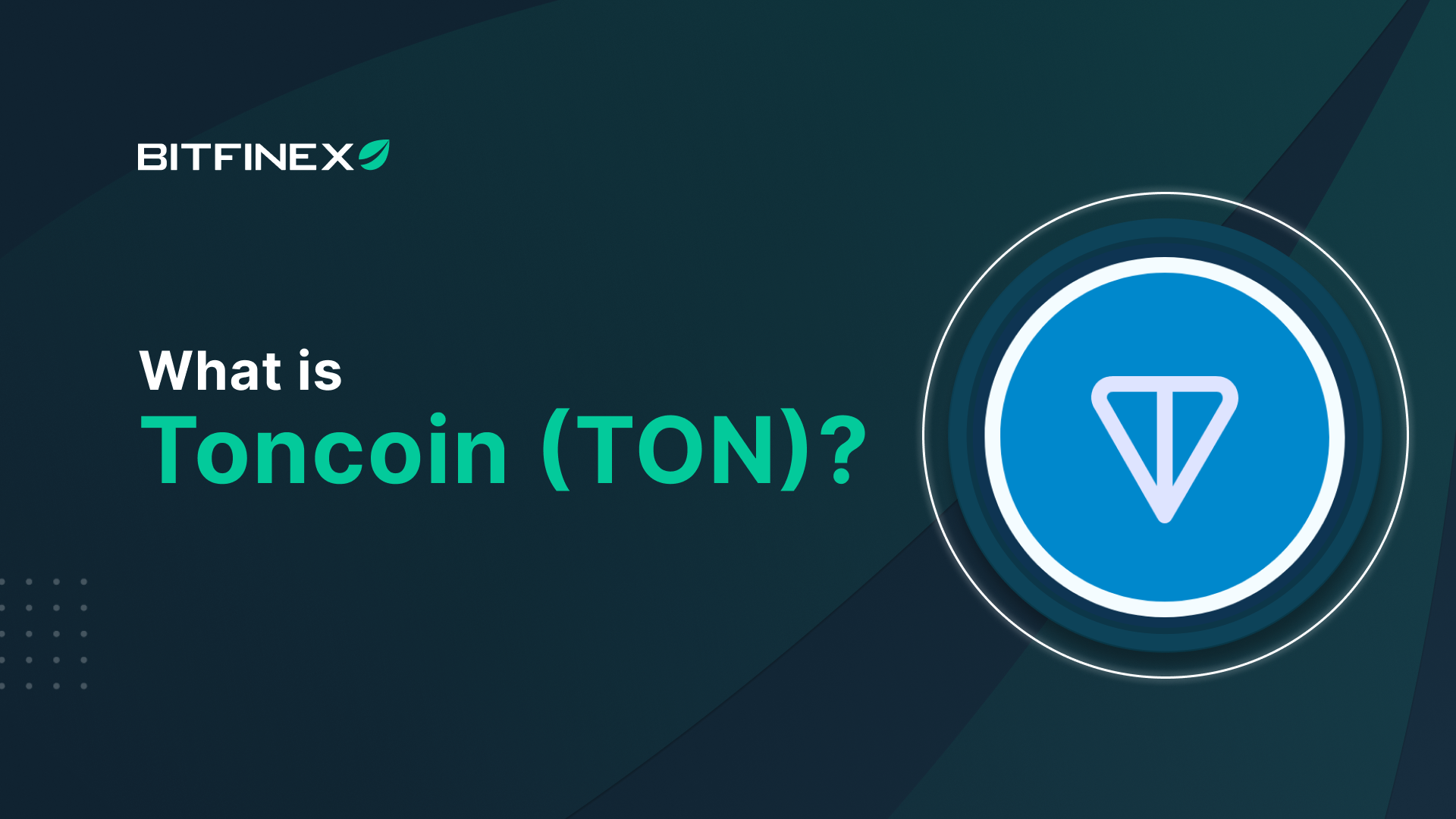
07 Apr What is the Open Network (TON)?
The Open Network or TON is a scalable layer 1 blockchain designed for mass adoption. TON was created by the team that also created the popular messaging app, Telegram. TON features ultra-fast transactions, very low fees, easy-to-use apps, and a small carbon footprint. TON is a shardable, multichain blockchain network which was designed to onboard billions of users, both from within Telegram and beyond.
TON is designed to be a platform which can facilitate Web3 experiences, like Smart Contracts, Decentralised Applications (DApps), Decentralised Autonomous Organizations (DAOs), Decentralised Finance (DeFi), Decentralised Exchanges (DEXs), decentralised data storage, and other blockchain innovations built on a highly scalable layer 1 chain.
TON’s grassroots open-source development community is working together with the TON Foundation to create a viable Web3 ecosystem designed to onboard the millions of Telegram users, many of whom are also very involved in the crypto and blockchain ecosystem. Telegram’s community is huge, with over 700 million users worldwide.
In addition to Telegram, Pavel Durov also founded VK, which is Russia’s answer to Facebook, and VK and Telegram share a huge overlap of users, many of which have a passionate interest in all things crypto. TON is positioned to offer the path of least resistance to onboarding hundreds of millions, if not billions, of users from both of these platforms.
The Open Network
In 2018, the Durov brothers, who founded Telegram released The Open Network whitepaper, and the Telegram team began working on the initial groundwork for the project. In 2020, the project then moved to become an open-source and community-driven project. The TON community continues to undertake development on the project to this very day.
In 2022, TON became The Open Network and launched its mainnet, which has now become fully operational and offers a wide variety of features. TON has been surrounded by the excitement in anticipation of its potential to onboard the masses, both through its resilient and highly scalable architecture and also through its origins as part of the Telegram ecosystem. TON’s integration with the messaging app could be a huge catalyst for mainstream crypto adoption.
Telegram is one of the most popular messaging and community apps in the crypto space, with thousands of users, crypto groups, and online communities using Telegram to discuss and support their preferred blockchains and to discuss markets, news, and trading strategies. TON’s capacity to serve Telegram and other major social networks, along with the crypto community’s adoption of Telegram, provides the potential to onboard a substantial number of new users into crypto by way of TON.
How the Open Network Works
TON boasts of being one of the most technologically advanced blockchains in the space and is capable of performing millions and possibly tens of millions of true Turing-complete smart contract transactions per second. It achieves this level of scalability and transaction throughput by utilising a master chain and work chains/shard chains.
TON’s layer-1 architecture is designed to scale up to 2 to the power of 32 work chains, each of which can be subdivided into up to 2 to the power of 60 shard chains. It can support millions of transactions per second near-instantly. Its master chain performs a similar function to Ethereum’s beacon chain and acts as an immutable ledger and point of reference for the work chains and their “shards”.
Each work chain can be envisioned as its own blockchain, with its own set of rules, which may cater to specific use cases. Workchains are subdivided into shards, which contain the activity and transaction records of a subset of accounts. All of these shard chains share a common block format and rules, and the work chains, while they may have differences and variations depending on the use case, all must conform to the same set of consensus rules to remain in sync with the master chain.
By distributing the on-chain activity of users across work chains and shard chains, TON has the capacity to scale and have a high degree of transaction throughput to meet the demands of Web3, DeFi, smart contracts and more when used by millions of people, without suffering in terms of performance.
Why is the Open Network Unique
The most obvious thing that sets TON apart from other blockchain projects is its capacity to integrate with the Telegram messaging app and other major social networks. There are no other blockchains that have a close relationship with one of the world’s most popular messaging apps, with hundreds of millions of users already within the ecosystem.
Payments between Telegram users are instantaneous, and payments for services can be made seamlessly within Telegram message chats, while transferring crypto to a friend can be done simply by using a short nickname without having to input a long wallet address. If TON’s adoption spreads from Telegram’s user base to other adjacent social networking apps like VK or others, we could see millions of users transacting with TON and using TON DApps.
TON also employed a “hybrid” consensus model in which 98.5% of the total token supply was distributed through Proof of Work (PoW) mining accessible by all community members in a “fair distribution” before the network switched to its current PoS consensus model.
What is the Open Network Ecosystem
The Open Network ecosystem consists of 510 projects, currently, which are spread out among categories familiar to most Web3/Blockchain enthusiasts. The categories within the ecosystem are:
- Centralised Exchanges (CEXs)
- Mining (although TON was mined initially for fair distribution, it has since moved to Proof of Stake, and mining is no longer possible)
- Wallets
- Block Explorers
- Cross Chain Bridges
- Utilities (described as “tools for developers & power users”)
- Channels (communities focused on TON, official communications and support from the TON team)
- NFTs
- Chats (chats about TON)
- Social (communication apps)
- Gambling (place a wager with TON)
- Tokens (Jetons on TON)
- DEXs
- Games (play and earn)
The TON ecosystem is thriving and has a lot of community-driven activity within it. Describing it in detail is beyond the scope of this post, but those who are interested should visit this page to learn more about it and how to get involved.
What is Toncoin (TON)
Toncoin (TON) is the native utility and payments token for The Open Network, which is used for transaction fees, staking, governance, and payments. It is the native token within the TON ecosystem and is used within DApps, DEXs, and DeFi platforms, as well as for decentralised governance and votes on changes to the network, the fees for transactions within the TON ecosystem, and P2P payments between users.
TON’s origin is an interesting journey. The original token, which was planned for Telegram’s messaging app and TON, was a token called “Grams”, which Telegram was working on after the Durov brothers released the TON whitepaper in 2018 and holding a $1.7 billion ICO.
In 2020, the SEC stepped in and warned Telegram that “Grams” would be viewed as a security which would need to go through the formal compliance procedures that are mandatory for all registered securities. At this point, Telegram stepped away from the project and allowed the community to take over.
TON test network2 tokens were placed into 20 PoW Giver smart contracts. These contracts allowed the community to mine the coins for a limited period of time, mimicking the “fair distribution” inherent in PoW blockchains like Bitcoin, Monero, Grin, and Litecoin.
This allowed TON’s tokens to be fairly dispersed amongst the community, a quality that is absent from many other Web3 and PoS blockchains, which gave tokens to team members, foundations, and whales in premines which preferred insiders rather than distributing coins fairly.
Once TON’s PoW mining period of token distribution ended, TON switched to become a PoS chain and now benefits from the high scalability, throughput, and low carbon footprint that PoS chains have been optimised for.
TON’s hybrid consensus model allowed it to benefit from the best of both worlds in a sense, and it’s one of the more interesting and unique ways a Web3 or “next generation” blockchain token distribution event has taken place.
More recently, the TON community, by way of governance, voted to suspend more than $2.5 billion in TON tokens which were in miner’s wallets without any outgoing transactions for 4 years, which resulted in the freezing of 1,081,389,416 TON, or a bit over 20 percent of the total supply when the vote was passed. The frozen tokens were believed to be “lost” by miners who no longer held the private keys.
TON Tokenomics
The Open Network Roadmap
2023 Q4
- Collator and Validator separation
2023 Q3
- Jetton Bridge
- Polygon Toncoin Bridge
- Extra-currencies
- ETH, BNB, BTC Bridge
- Scalability and speed showcase
- Sharding Guidelines and Tools
2023 Q2
- Elector and Config Update
- DAO & Liquidity Staking Contracts
- Developer Libraries
- Tokenomics Deflation Mechanism
- Decentralised Encrypted Messaging
- Address Reform
- TVM Update
2023 Q1
- Token Bridge
- TON Connect
- Tokens Guidelines & Tools
- Lockup and Vesting Tools
- TON Awards 2022
- Network config adjustment
- Tokenomics optimization voting
The Open Network Team
TON is led by its community as an open-source project, and its user base which participates in governance decisions by voting on community and foundation-proposed initiatives in token holdings-based weighted “Validator Voting”.
The TON Foundation has operations in Dubai and is a decentralised community which was set up to support ecosystem development after Telegram abandoned the project. More information regarding the TON Foundation can be found here.
How to buy TON on Bitfinex
How to buy TON with crypto
1. Log in to your Bitfinex account or sign up to create one.
2. Go to the Deposit page.
3. In the Cryptocurrencies section, choose the crypto you plan to buy TON with and generate a deposit address on the Exchange wallet.
4. Send the crypto to the generated deposit address.
5. Once the funds arrive in your wallet, you can trade them for TON. Learn how to trade on Bitfinex here.
Also, we have Bitfinex on mobile, so you can easily buy TON currency while on-the-go.
[AppStore] [Google Play]



